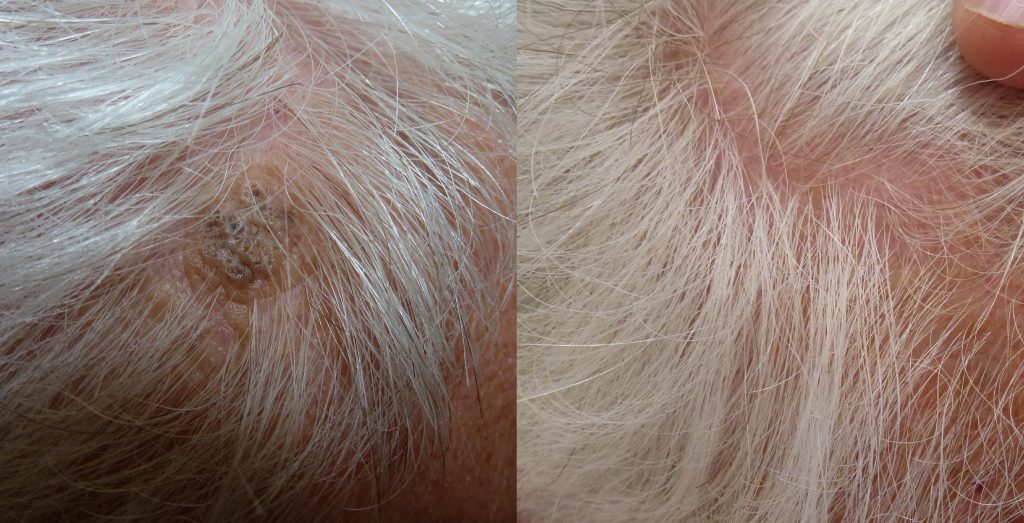Sometimes however, unsightly moles, skin tags or other raised lesions are the features first noticed by others.
Until recently there have been only two options for dealing with moles – leave them alone, or have them surgically excised with a resultant scar which is often as obvious as the mole. Often, moles are in areas where excision is difficult or impossible (other than by excision and graft) such as on and around the nose, lips and eyes.
Remove your moles cosmetically, without excision and suturing
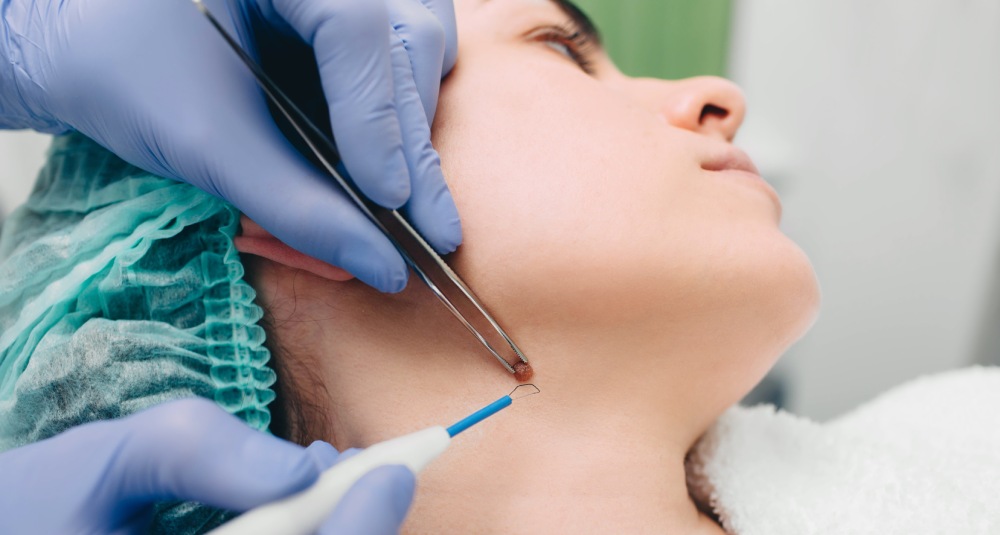
Radiolase - Radiowave Treatment
Radiowave technology is the passage of ultra-high frequency radiowaves into the skin via fine electrodes which make very fine incisions in tissue, coagulating at the same time so there is no, or minimal bleeding.
Only the cells immediately adjacent to the electrodes are affected, so there is little or no lateral damage to the adjacent skin, and scarring is minimal.
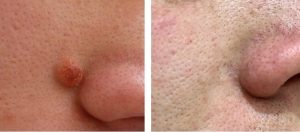
Before After
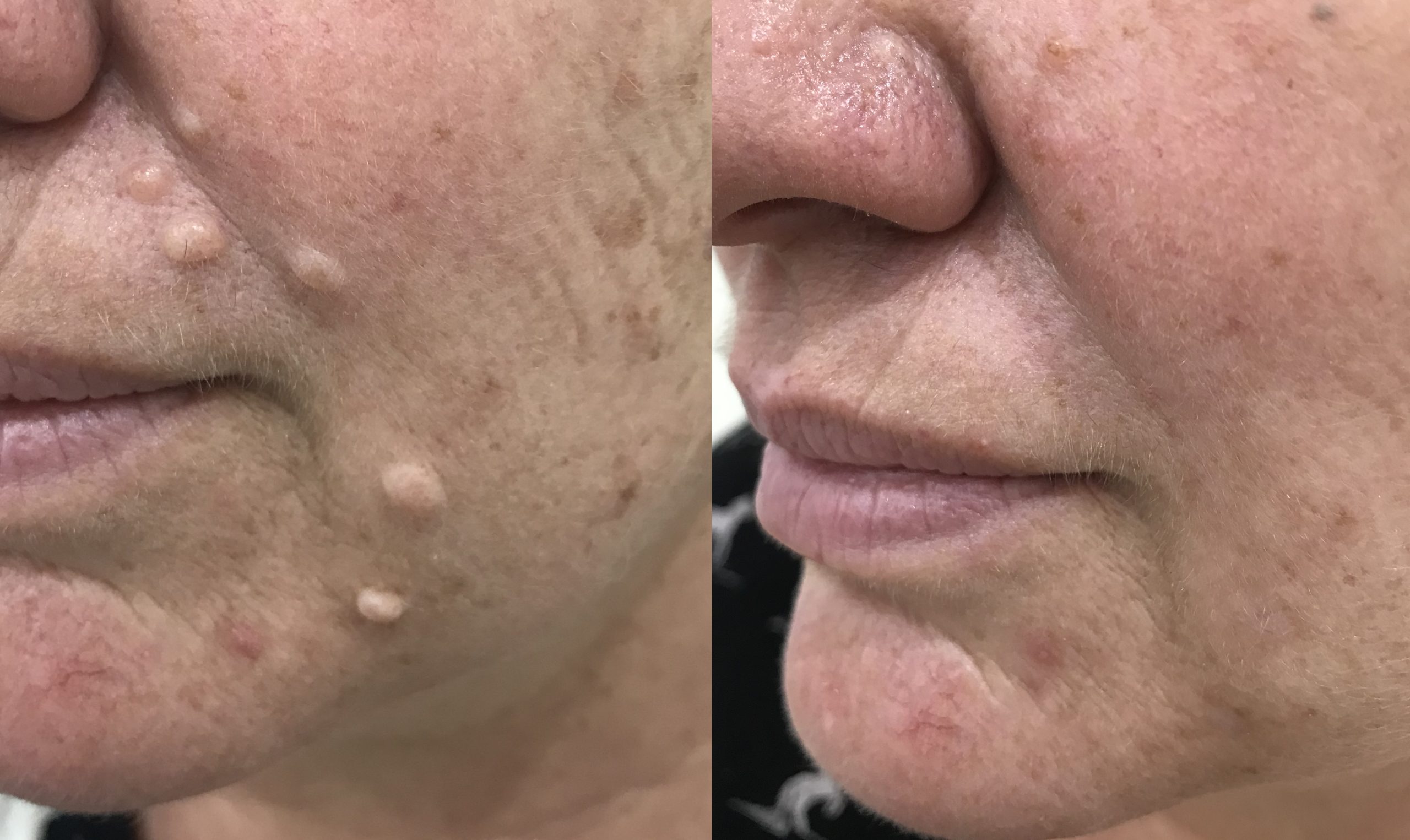
Before After
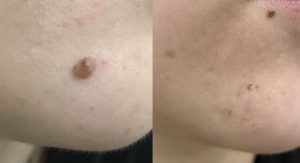
Before After
In contrast to surgical excision, only the mole tissue above skin level is removed. (Surgical excision requires removal of a small margin of normal skin around the mole plus the skin under the mole, down to the subcutaneous level, then suturing, which requires postoperative wound care and results in the inevitable scar).

Before After
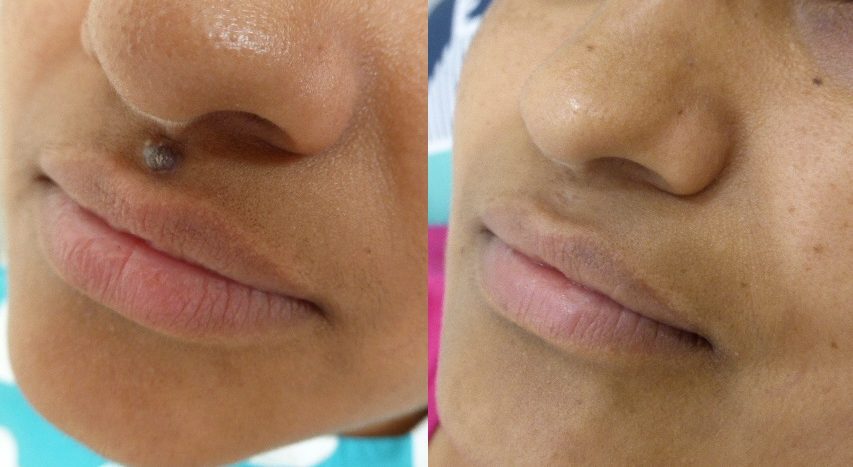
Before After
The fine electrodes used in radiowave surgery remove fine slivers of mole tissue, shaving it down to skin level leaving a smooth surface which forms a superficial scab.
Provided this is left to heal naturally (7 to 10 days) there is rarely any scarring at the treatment site.
There may be slight colour difference in the treated skin (compared with the surrounding skin) but this will tend to fade and blend in over time.
The process is painless, as the mole is injected with a local anaesthetic prior to removal.
Before consideration of mole removal, it is important to have the mole assessed by one of our experienced clinicians to ensure that it does not require surgical excision, or biopsy, to rule out skin cancer.
The Doctors at Skin Doctor SA have decades of experience in the area of skin cancer assessments and treatments and also the use of the latest radiowave technology for cosmetic removals.
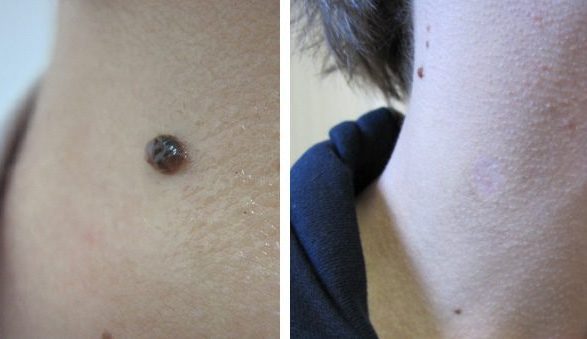
Before After
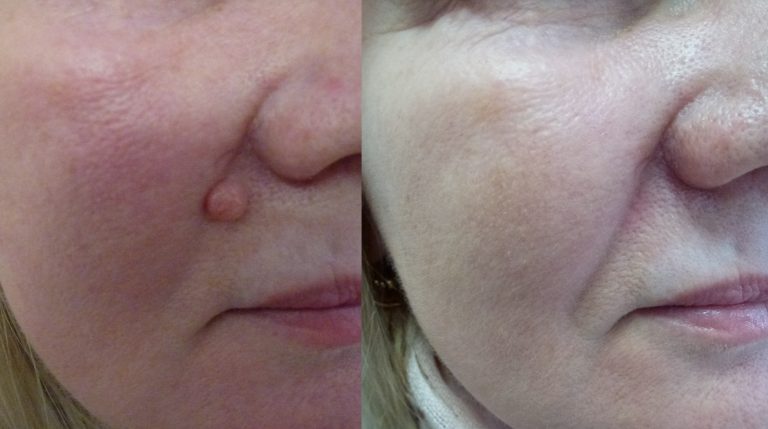
Before After
Skin Tags
Skin tags are as their name implies abnormal growths of skin ranging in size from a pin-head through to that of a small pea. When small they are often only a stem, but when large they can form a pedunculated (round) lump on a stalk.
Skin tags occur most commonly on the neck, chest and face, particularly around the eyes. Skin tags are most common in women and can be extremely distressing especially when numerous. Skin tags respond well to treatment with either Laser or Radiowave removal.
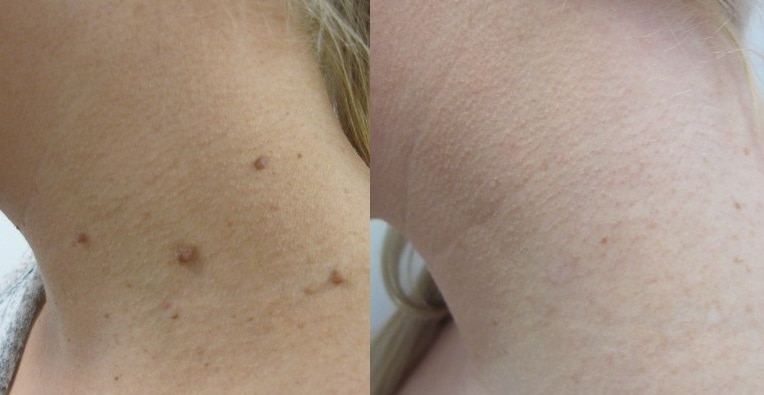
Before After
Seborrheic Keratosis
Seborrheic keratoses, sometimes referred to senile warts or age spots, are very common and in contrast to solar keratoses are not related to sun exposure.
Seborrheic keratoses appear as varying shades of brown, waxy, rough raised lesions. They occur commonly in areas not exposed to the sun. Seborrheic Keratoses occur spontaneously, their occurrence is related to a genetics, and in general they become larger and more numerous with aging, in susceptible individuals.
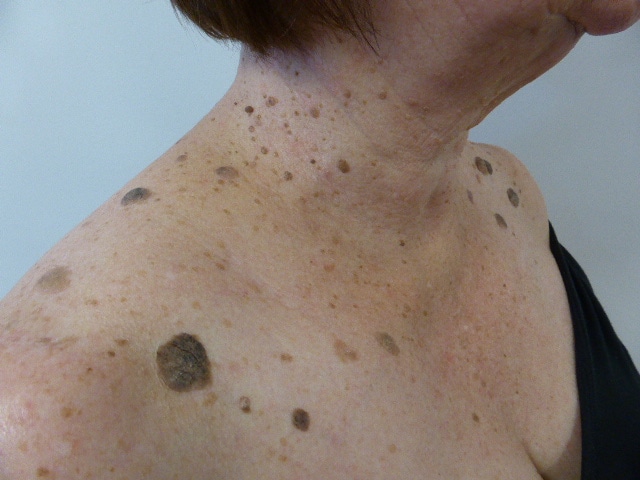
However, caution should be exercised to exclude other conditions, especially skin cancer.
Seborrheic keratoses are easily removed with Laser or Radio-wave treatment.
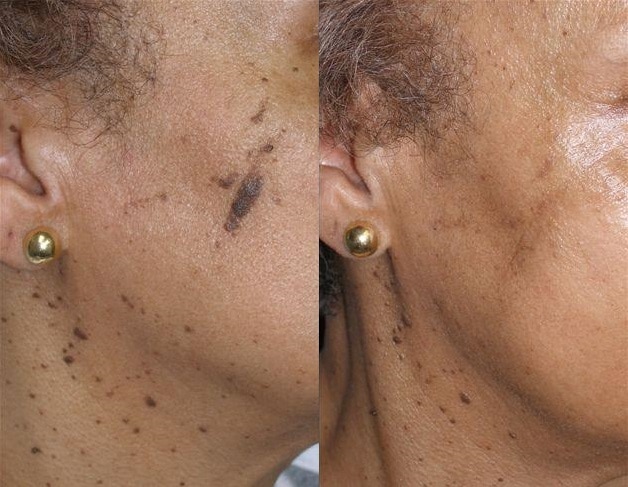
Before After
